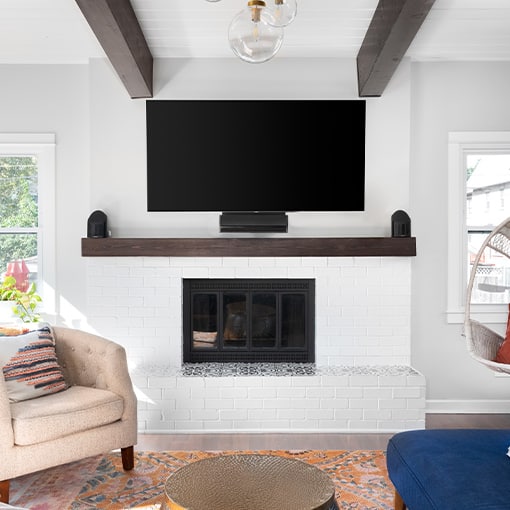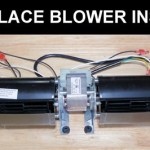Hanging TVs Above Gas Fireplaces: Considerations and Best Practices
The decision to mount a television above a gas fireplace is a popular one in modern home design. It offers a streamlined aesthetic, consolidating entertainment and heating elements in a single focal point. However, this configuration presents a unique set of challenges that must be rigorously addressed to ensure the safety and longevity of both the television and the surrounding structural elements. Factors like heat exposure, mounting stability, and cable management require careful consideration. Ignoring these elements can lead to costly damage, reduced television lifespan, or even potential safety hazards.
Before proceeding with such an installation, a thorough understanding of the potential risks and mitigation strategies is paramount. This article will explore the key factors involved in hanging a television above a gas fireplace, providing guidance on assessing suitability, selecting appropriate mounting hardware, and implementing best practices for installation and operation.
Understanding the Heat Factor
The primary concern when mounting a television above a gas fireplace is the potential for heat damage. Modern televisions are sensitive electronic devices designed to operate within specific temperature ranges, typically between 32°F (0°C) and 104°F (40°C). Exposing a television to excessive heat can lead to a variety of problems, including:
Component Failure: Excessive heat can degrade the internal components of the television, such as capacitors, resistors, and integrated circuits. This can lead to premature failure, reduced picture quality, and ultimately, complete malfunction.
Screen Damage: The liquid crystal display (LCD) or organic light-emitting diode (OLED) panel can be negatively affected by prolonged exposure to high temperatures, resulting in discoloration, screen distortion, or permanent damage.
Shortened Lifespan: Even if immediate damage is not apparent, consistent exposure to elevated temperatures will significantly reduce the overall lifespan of the television.
Therefore, it is crucial to determine the amount of heat the television will be exposed to before installation. This involves measuring the temperature of the wall above the fireplace during operation. A simple infrared thermometer can be used to take these measurements. Ideally, the temperature should remain within the television's operating range. If the temperature exceeds the recommended limits, alternative mounting locations should be considered.
Several factors influence the amount of heat radiating from the fireplace to the wall above, including the fireplace's BTU rating, the presence of a mantel, and the distance between the fireplace and the television. Fireplaces with higher BTU ratings generate more heat. A mantel acts as a shield, deflecting heat away from the wall. A greater distance between the fireplace and the television reduces the intensity of the heat exposure.
If installing above the fireplace is the only viable option, mitigation techniques can be employed. These include installing a deeper mantel to provide more shielding, using heat-resistant materials behind the television mount, and ensuring adequate ventilation around the television.
Choosing the Right Mounting Hardware and Location
Selecting the appropriate mounting hardware is another critical step in ensuring a safe and secure installation. The mount must be strong enough to support the weight of the television and designed to withstand the potential stress caused by heat expansion and contraction. Furthermore, the mounting location on the wall must be structurally sound to handle the combined weight of the television and the mount. Improper installation can lead to the television falling, causing damage and potential injury.
When choosing a mount, consider the following factors:
Weight Capacity: The mount's weight capacity must exceed the television's weight. It is advisable to choose a mount with a safety margin, exceeding the television's weight by at least 25%.
VESA Compatibility: Ensure that the mount is compatible with the television's VESA (Video Electronics Standards Association) mounting pattern. VESA patterns are standardized screw hole configurations on the back of televisions used for mounting.
Type of Mount: Various types of mounts are available, including fixed mounts, tilting mounts, and full-motion mounts. Fixed mounts are the simplest and most cost-effective option, providing a stable and secure hold. Tilting mounts allow for vertical adjustment, which can improve viewing angles. Full-motion mounts offer the greatest flexibility, allowing for both vertical and horizontal adjustment.
Material: Look for mounts made from durable materials such as steel. Avoid mounts made from flimsy or low-quality materials.
The location of the television on the wall is also crucial. As mentioned earlier, the higher the television is mounted, the greater the heat exposure. However, mounting the television too low can result in an uncomfortable viewing angle. The ideal viewing height is typically at eye level when seated. A compromise must be struck between heat exposure and viewing comfort. A tilting mount can help to mitigate the viewing angle issue by allowing the television to be angled downwards.
Before drilling any holes, use a stud finder to locate wall studs. Securely anchoring the mount to wall studs is essential for a stable and secure installation. If wall studs are not ideally positioned, consider using a mounting plate that spans multiple studs. Avoid mounting the television directly to drywall without proper anchoring.
Effective Cable Management and Ventilation
Proper cable management is not only aesthetically pleasing but also crucial for preventing damage to the cables and ensuring the television's longevity. Cables exposed to heat can degrade over time, leading to signal loss or even electrical hazards. Additionally, tangled cables can obstruct ventilation, further exacerbating the heat problem.
Implement the following cable management techniques:
Use Cable Concealers: Cable concealers are plastic or metal channels that run along the wall, hiding the cables from view. These concealers protect the cables from heat and physical damage.
Employ Cable Ties or Velcro Straps: Bundle cables together using cable ties or Velcro straps to prevent them from tangling and obstructing ventilation.
Utilize In-Wall Cable Management Systems: In-wall cable management systems allow cables to be run through the wall, completely hiding them from view. This is the most aesthetically pleasing option but requires more extensive installation.
Avoid Overcrowding Cables: Do not overcrowd cables behind the television. Ensure that there is sufficient space for air to circulate.
Adequate ventilation is equally critical. The television needs sufficient airflow to dissipate heat. Ensure that the vents on the back of the television are not blocked by the mount or cables. Consider using spacers to create a gap between the television and the wall, allowing for better airflow. If the television is installed in a recessed area, ensure that there is adequate ventilation in the surrounding space.
Furthermore, the type of gas fireplace itself plays a role. Ventless gas fireplaces, while convenient, tend to radiate more heat directly into the room compared to vented models. If using a ventless unit, extra caution and more aggressive mitigation strategies may be necessary.
Regular inspection of the installation is recommended. Periodically check the temperature of the wall above the fireplace during operation to ensure that it remains within acceptable limits. Inspect the cables for signs of damage or degradation. Ensure that the mount remains securely attached to the wall. Address any issues promptly to prevent further damage or safety hazards.
Following these guidelines will help to ensure a safe, functional, and aesthetically pleasing installation of a television above a gas fireplace. Proper planning, careful execution, and ongoing maintenance are essential for maximizing the lifespan of the television and minimizing the risk of potential problems.

Can I Mount My Tv Above The Fireplace

Everything You Need To Know About Tv Mounts For Fireplaces

Can I Mount My Tv Above The Fireplace

Pros And Cons Of Mounting Your Tv Over Fireplace Vancouver Gas Fireplaces

ᑕ❶ᑐ What To Consider Before Mounting A Tv Above Fireplace

Mounting Your Tv Above Fireplace

Can I Hang A Tv Over My Fireplace Woodlanddirect Com

ᑕ❶ᑐ What To Consider Before Mounting A Tv Above Fireplace

Mounting A Tv Over The Fireplace It S Not Mistake Used To Be Cepro

How To Safely Mount Your Tv Above The Fireplace








